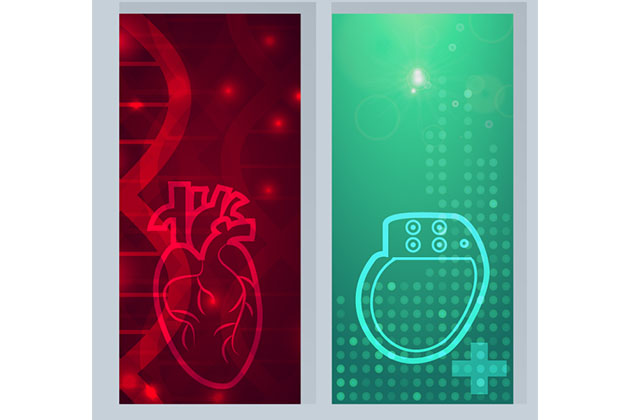Lo studio mostra per la prima volta un innovativo pacemaker cardiaco autoalimentato testato con successo nei suini
Il nostro cuore maintains a pace through its internal pacemaker called sinoatrial node (SA node), also called sinus node located in the upper right chamber. This internal pacemaker releases electrical charge 60-100 times in a minute and this energy carries out contractions in heart muscles which allow our heart to pump blood throughout our body. As we age or get an illness, this internal pacemaker is unable to keep the heart beating properly. Irregular heartbeat is also caused by a condition called arrythmia which slows down one’s heart’s normal rate. To substitute for this loss, a traditional heart pacemaker – a battery-operated electronic device – can be surgically implanted inside a patient to regularize heartbeat and keep the heart beating steadily.
Un pacemaker cardiaco tradizionale
Il dispositivo è costituito da un generatore di impulsi alimentato a batteria che viene impiantato sotto la pelle vicino alla clavicola. Ha anche fili isolati che collegano il dispositivo al cuore. Il circuito elettronico genera segnali elettrici che vengono trasmessi al cuore tramite elettrodi. Il pacemaker è un dispositivo salvavita; tuttavia, una limitazione significativa degli attuali pacemaker è che devono essere sostituiti in qualsiasi momento tra i 5 ei 12 anni dal primo inserimento a causa della durata limitata della batteria. L'impianto può essere eseguito solo tramite un intervento chirurgico invasivo utilizzando l'anestesia locale, che di per sé è una sfida poiché la cavità toracica del paziente deve essere aperta. La chirurgia non è solo costosa, ma aumenta anche il rischio di complicanze, infezioni o persino emorragie del paziente. È stato progettato un altro tipo di piccolo pacemaker che può essere impiantato tramite un catetere evitando l'intervento chirurgico, ma è ancora in fase di test.
I ricercatori si sono concentrati sulla costruzione pacemaker cardiaci che potrebbe in alternativa utilizzare l'energia naturale del battito cardiaco di una persona invece della batteria. In teoria, un tale pacemaker non dovrebbe essere sostituito una volta impiantato all'interno di un paziente. I pacemaker alimentati al plutonio sono stati prodotti molti decenni prima. Finora la progettazione sperimentale di nuovi pacemaker ha dovuto affrontare diverse limitazioni, come la struttura rigida del design che ne limita la potenza e le complicazioni con la miniaturizzazione.
Un pacemaker innovativo senza batteria con un design unico
In un nuovo studio pubblicato in ACS Nano researchers from National Key Laboratory for Science and Technology, Shanghai, China set out to design a novel small pacemaker device which can be powered from energy of one’s own heartbeat and they successfully tested this device in pigs. The new device can be tucked under the heart rather than near the collar bone as with conventional pacemakers. The pacemaker is based on an ideal symbiotic relationship between one’s heart and the device.
The design of this new pacemaker was initiated by first making a small flexible plastic frame. This frame was bonded with piezoelectric layers which upon being bent generate energy. This part, called energy ‘harvester’ was placed on a chip. The device was implanted in pigs and it was observed that the animals’ own heartbeat could alter (bend) the shape of the frame thereby generating enough energy (power) equivalent to a battery-powered pacemaker. The device’s flexible plastic frame allows it to capture more energy from the heart compared to traditional pacemakers which have hard cases.
Since humans have a physiology very similar to pigs, this pacemaker could work well in humans too. Researchers point out some technical issues which will need to be addressed, example the device comprises of three separate technologies –energy harvester, pacemaker chip and wires – which need to be integrated into one device. Further testing in animals and then in humans can confirm the device’s long-term stability. Such a device if successful will require invasive surgery only once reducing patient’s risk of complications. One major limitation of this new device could be that doctors may not be able to remotely monitor patients as in the case of battery-operated pacemakers.
***
{Puoi leggere il documento di ricerca originale facendo clic sul collegamento DOI indicato di seguito nell'elenco delle fonti citate}
Fonte (s)
Ning L et al. 2019. Diretto che alimenta un pacemaker cardiaco reale da energia naturale di un battito cardiaco. ACS Nano. https://doi.org/10.1021/acsnano.8b08567






































